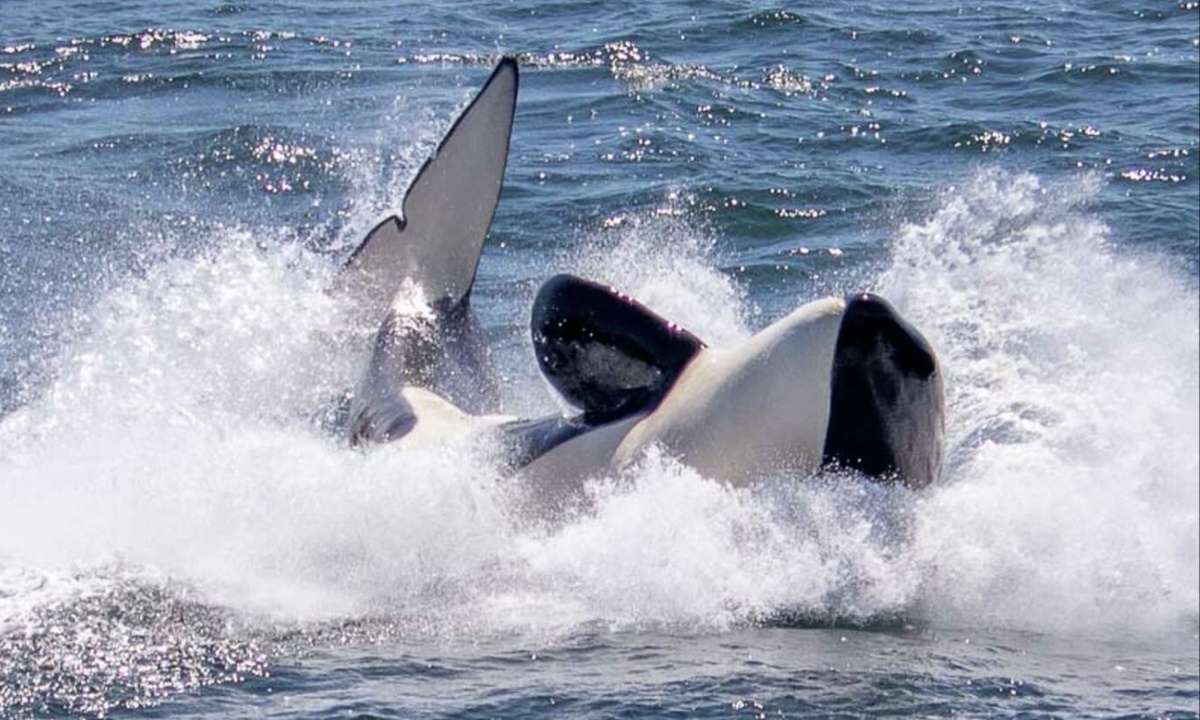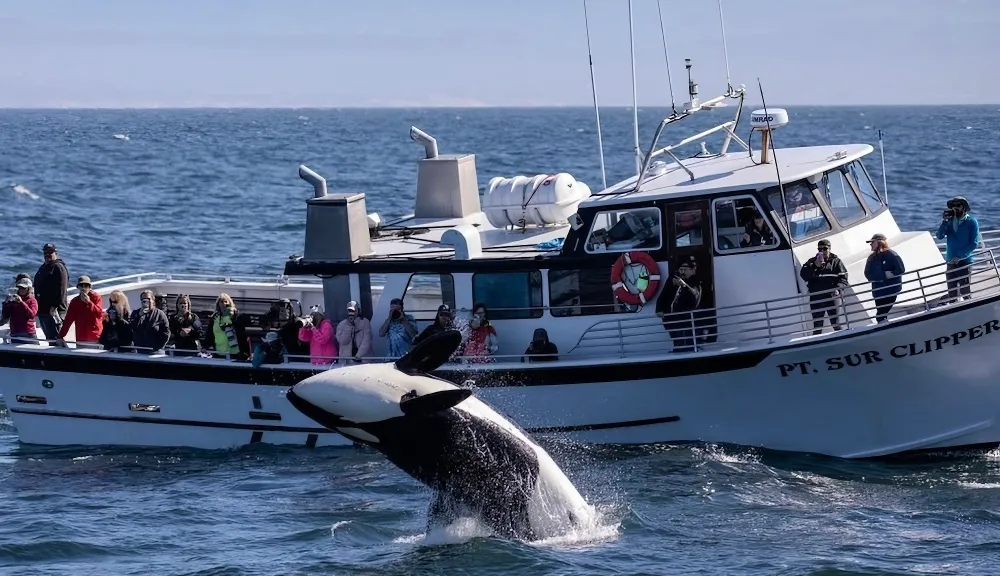Last weekend, wildlife photographers in Monterey Bay captured stunning images of killer whale calves engaging with their prey, thrilling those fortunate enough to witness the event. The photos, shared by local tour group Monterey Bay Whale Watch, featured at least one calf playfully bobbing in the water with a black sea bird in its mouth.
This playful yet predatory behavior sparked interest among observers and sparked discussions about the nature of such interactions in the wild.
According to the National Oceanic and Atmospheric Administration (NOAA), the behavior exhibited by the orca calves can be interpreted in various ways. NOAA Fisheries spokesperson Nicholas Rahaim indicated that the actions could be playful, a form of practice for younger whales, or even a teaching method employed by mothers in the presence of their calves.
This complexity suggests that what may appear cruel or unusual could serve important social or developmental purposes within the whale community.

Killer whales, or orcas, are found in every ocean around the globe, dominating both open seas and coastal waters. Known for their social structures resembling packs of wolves, they are closely related to dolphins, despite their intimidating nickname.
Current estimates suggest there are around 50,000 orcas in the wild, but their populations are threatened by factors such as oil spills, fishing gear entanglements, and decreasing food supplies, which raise concerns about their long-term survival.
While playful predatory behavior is not uncommon among orcas, recent sightings have brought additional excitement to wildlife enthusiasts. In a noteworthy event from last month, the same tour group encountered a rare white killer whale named “Frosty.”
This unique whale has been spotted as far south as Ensenada and as far north as British Columbia. Experts believe its distinctive milky coloration may result from a genetic condition called leucism or a disorder known as Chediak-Higashi syndrome, which leads to partial albinism.
As the whale-watching season progresses, Monterey Bay Whale Watch anticipates more thrilling encounters with these massive predators. In a recent Facebook post, the group expressed enthusiasm for the ongoing secondary killer whale season, noting that the presence of the calves has made this October particularly exciting for observers.
The combination of playful behavior and rare sightings underscores the allure of orcas and the importance of conservation efforts to protect these remarkable marine mammals.

